- BETTING TIPS
- BETTING TIPS NAVIGATIONS
 Premier League
Premier League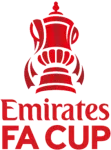 FA Cup
FA Cup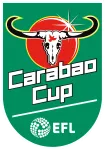 League Cup
League Cup La Liga
La Liga Copa del Rey
Copa del Rey Super Cup
Super Cup Champions League
Champions League Europa League
Europa League Europa Conference League
Europa Conference League World Cup
World Cup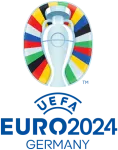 Euro Championship
Euro Championship Nations League
Nations League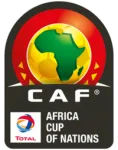 Africa Cup of Nations
Africa Cup of Nations Copa America
Copa America International Friendly
International Friendly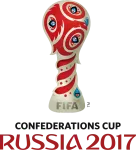 Confederations Cup
Confederations Cup Serie A
Serie A Coppa Italia
Coppa Italia Super Cup
Super Cup Bundesliga
Bundesliga Ligue 1
Ligue 1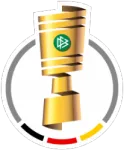 DFB Pokal
DFB Pokal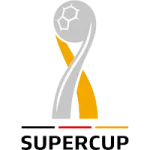 Super Cup
Super Cup Malaysia Super League
Malaysia Super League Coupe de France
Coupe de France Trophée des Champions
Trophée des Champions Pro League
Pro League
- Teams
- TEAMS NAVIGATIONS
 Premier League
Premier League FA Cup
FA Cup League Cup
League Cup La Liga
La Liga Copa del Rey
Copa del Rey Super Cup
Super Cup Champions League
Champions League Europa League
Europa League Europa Conference League
Europa Conference League World Cup
World Cup Euro Championship
Euro Championship Nations League
Nations League Africa Cup of Nations
Africa Cup of Nations Copa America
Copa America International Friendly
International Friendly Confederations Cup
Confederations Cup Serie A
Serie A Coppa Italia
Coppa Italia Super Cup
Super Cup Bundesliga
Bundesliga Ligue 1
Ligue 1 DFB Pokal
DFB Pokal Super Cup
Super Cup Malaysia Super League
Malaysia Super League Coupe de France
Coupe de France Trophée des Champions
Trophée des Champions Pro League
Pro League
- Fixtures & Results
- Fixtures & Results NAVIGATIONS
 Premier League
Premier League FA Cup
FA Cup League Cup
League Cup La Liga
La Liga Copa del Rey
Copa del Rey Super Cup
Super Cup Champions League
Champions League Europa League
Europa League Europa Conference League
Europa Conference League World Cup
World Cup Euro Championship
Euro Championship Nations League
Nations League Africa Cup of Nations
Africa Cup of Nations Copa America
Copa America International Friendly
International Friendly Confederations Cup
Confederations Cup Serie A
Serie A Coppa Italia
Coppa Italia Super Cup
Super Cup Bundesliga
Bundesliga Ligue 1
Ligue 1 DFB Pokal
DFB Pokal Super Cup
Super Cup Malaysia Super League
Malaysia Super League Coupe de France
Coupe de France Trophée des Champions
Trophée des Champions Pro League
Pro League
- Tables
- Tables NAVIGATIONS
 Premier League
Premier League FA Cup
FA Cup League Cup
League Cup La Liga
La Liga Copa del Rey
Copa del Rey Super Cup
Super Cup Champions League
Champions League Europa League
Europa League Europa Conference League
Europa Conference League World Cup
World Cup Euro Championship
Euro Championship Nations League
Nations League Africa Cup of Nations
Africa Cup of Nations Copa America
Copa America International Friendly
International Friendly Confederations Cup
Confederations Cup Serie A
Serie A Coppa Italia
Coppa Italia Super Cup
Super Cup Bundesliga
Bundesliga Ligue 1
Ligue 1 DFB Pokal
DFB Pokal Super Cup
Super Cup Malaysia Super League
Malaysia Super League Coupe de France
Coupe de France Trophée des Champions
Trophée des Champions Pro League
Pro League
- News
- News NAVIGATIONS
 Premier League
Premier League FA Cup
FA Cup League Cup
League Cup La Liga
La Liga Copa del Rey
Copa del Rey Super Cup
Super Cup Champions League
Champions League Europa League
Europa League Europa Conference League
Europa Conference League World Cup
World Cup Euro Championship
Euro Championship Nations League
Nations League Africa Cup of Nations
Africa Cup of Nations Copa America
Copa America International Friendly
International Friendly Confederations Cup
Confederations Cup Serie A
Serie A Coppa Italia
Coppa Italia Super Cup
Super Cup Bundesliga
Bundesliga Ligue 1
Ligue 1 DFB Pokal
DFB Pokal Super Cup
Super Cup Malaysia Super League
Malaysia Super League Coupe de France
Coupe de France Trophée des Champions
Trophée des Champions Pro League
Pro League
- Live ScoresLive
Everton
England| Country | : | England |
| League | : | |
| Founded | : | 1878 |
| Venue | : | Hill Dickinson Stadium |
| Coach | : | Michael Keane (England) |
Venue
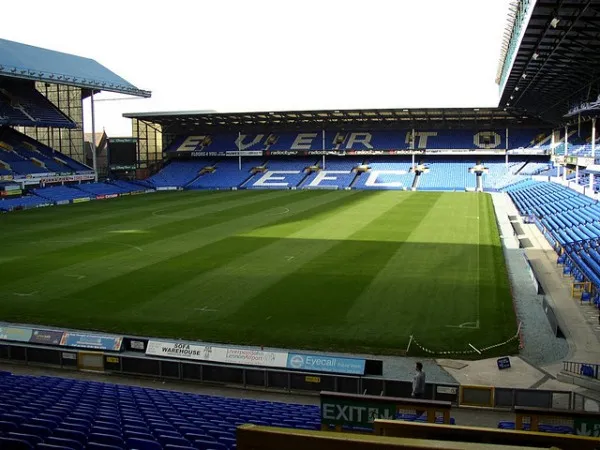
Hill Dickinson Stadium
| City | : | Liverpool, Merseyside |
| Capacity | : | 52,888 |
| Surface | : | Grass |
Everton Football Club, commonly known as Everton or The Toffees, is one of the most respected and historic football clubs in England. Based in Liverpool, the club has a rich history filled with both triumph and setbacks. Since its formation in 1878, Everton FC has become synonymous with success, resilience, and passion. From early league victories to more recent Premier League campaigns, this article delves into Everton’s history, its most significant successes, and the latest updates surrounding the club.
The Early Years: Formation and Initial Success
Founded in 1878, Everton FC initially played in regional competitions before joining the Football League in 1888. In the early 20th century, Everton became a major force in English football, winning its first First Division title in 1891. The club quickly established itself as one of the prominent teams in the country, and Goodison Park, its iconic stadium, became home in 1892, providing the foundation for its success.
Everton’s early years were marked by fluctuating fortunes, but the team continued to prove its strength. By the turn of the century, they had won several league titles, contributing to the establishment of the club's legacy in English football.
Match Predictions
- Port Vale vs. Maldon & Tiptree Predictions & Betting Tips on Nov 02 - 23:00 PM
- Manchester City vs. Bournemouth Predictions & Betting Tips on Nov 03 - 00:30 AM
- Gainsborough Trinity vs. Accrington ST Predictions & Betting Tips on Nov 03 - 01:15 AM
- Tamworth vs. Leyton Orient Predictions & Betting Tips on Nov 04 - 03:30 AM
- Sunderland vs. Everton Predictions & Betting Tips on Nov 04 - 04:00 AM
The Golden Years: Success in the 1960s and 1980s
The 1960s marked a high point in Everton's history. Under the guidance of manager Harry Catterick, Everton claimed the 1963 First Division title, followed by another championship win in 1969. The club’s success continued with a victory in the 1966 FA Cup, which solidified Everton as a major competitor in English football.
However, it was during the 1980s that the club truly reached the peak of its success. Under Howard Kendall, Everton FC won two First Division titles in 1985 and 1987. The 1985 season was particularly memorable, as the club also secured victory in the European Cup Winners’ Cup, a remarkable achievement in European football. This period remains one of the most successful in the club’s history, as they dominated both domestically and internationally.
The 1990s and 2000s: Transition and Challenges
The 1990s saw Everton experience a mix of highs and lows. Although the club continued to maintain its Premier League status, they faced difficulties in regaining the dominance of previous decades. In 1994, the club was nearly relegated to the Second Division, but a strong recovery helped them avoid dropping out of the top flight.
In the 2000s, Everton stabilized and even enjoyed some success under manager David Moyes, who took charge in 2002. Under Moyes, the club secured a string of solid Premier League finishes, with an impressive fourth-place finish in 2005-2006 that earned them a spot in the UEFA Cup (now known as the Europa League).
While the 2000s were not a period of major trophy wins, Everton remained a competitive force in the Premier League and established themselves as a reliable mid-table club.
The 2010s: A New Era of Challenges and Growth
The 2010s saw Everton FC continue to build upon its foundation but also face new challenges. Under manager Roberto Martínez, the club experienced a period of entertaining football, culminating in a strong fifth-place finish in the 2013-2014 Premier League season. However, despite some promising performances, the team struggled to break into the top four and secure a spot in European competitions.
In 2016, Ronald Koeman was appointed manager, and the club invested heavily in the transfer market. Despite an ambitious approach, the club struggled with consistency, finishing mid-table and not achieving the expected success. The following years saw several managerial changes, with Sam Allardyce and Marco Silva taking charge in an attempt to bring success to the club.
Recent Updates: The Carlo Ancelotti Era and New Ambitions
One of the most significant updates in Everton’s history came in 2019, when Carlo Ancelotti, one of Europe’s most accomplished managers, was appointed as head coach. Ancelotti’s arrival was seen as a statement of intent, and the club made notable moves in the transfer market, including bringing in players like James Rodríguez and Allan.
Under Ancelotti, Everton showed promise, particularly with a strong start to the 2020-2021 season, securing victories over top teams such as Tottenham Hotspur and Liverpool. However, inconsistency and injuries marred their season, and they finished in 10th place by the end of the campaign.
In 2021, Ancelotti left to rejoin Real Madrid, leaving Rafael Benítez to take over as manager. The club’s ambition is still evident as they continue to strengthen their squad and compete for higher positions in the Premier League. The recent years have shown a focus on youth development, with exciting talents like Dominic Calvert-Lewin and Richarlison leading the charge.
Everton's Stadium: Goodison Park and the Future
Goodison Park has been the home of Everton FC since 1892, making it one of the most historic and beloved football stadiums in England. With a capacity of 40,000 seats, Goodison is known for its passionate fanbase and electric atmosphere. The stadium has witnessed countless iconic moments in the club’s history and remains the spiritual home of Everton FC.
In recent years, the club has explored the possibility of moving to a new stadium, with plans for a £500 million project for a new ground at Bramley-Moore Dock, designed to bring a modernized stadium to the city of Liverpool. The move is part of the club’s long-term vision to build a world-class infrastructure and continue to compete at the highest level in both domestic and European competitions.
The Future of Everton FC
Everton FC continues to have great ambition. Despite the challenges the club has faced in recent years, there is hope for a brighter future. The appointment of Rafael Benítez as manager is just one step towards rebuilding the team and returning to the heights of the club’s golden years. With a strong squad and investment in new players, Everton is focused on achieving a top-four finish in the Premier League and returning to the European stage.
News & Updates


